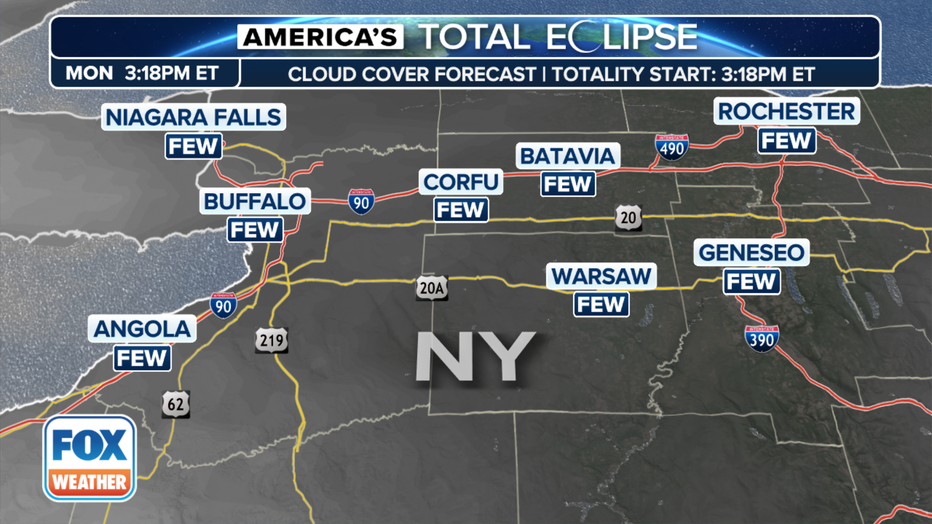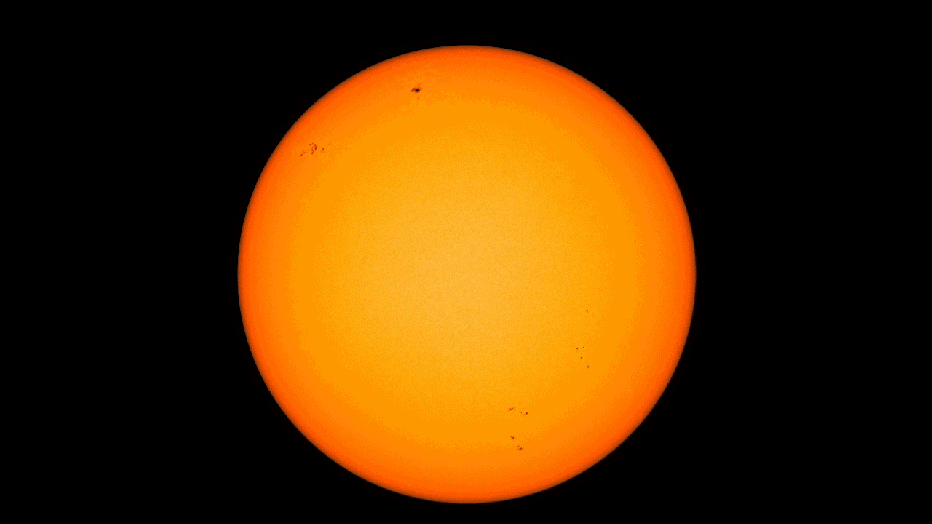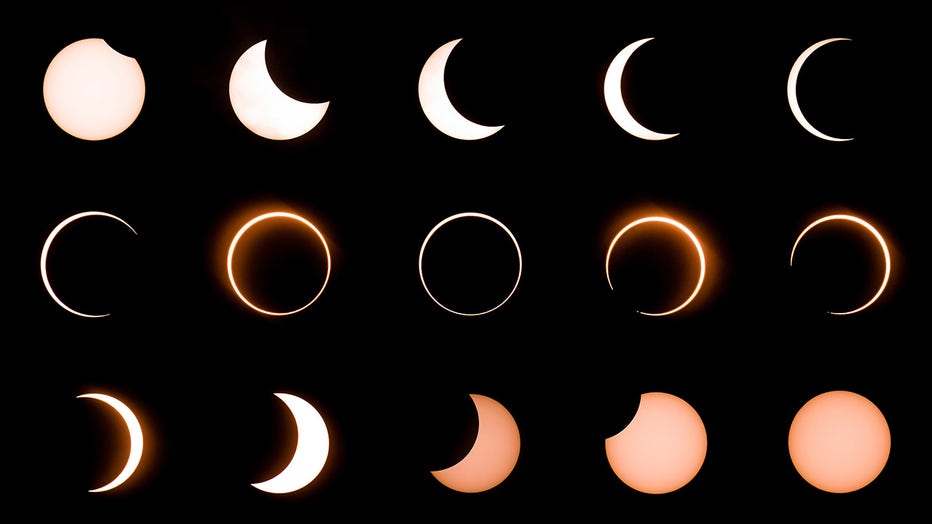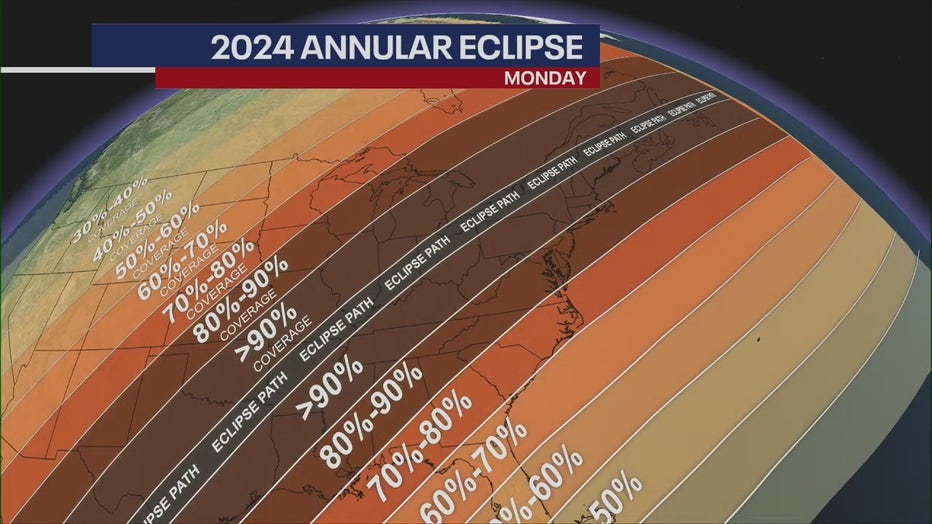NY cloud forecast for April 8: What to expect for the solar eclipse

2024 solar eclipse forecast for New York
Can New York expect clear skies for Monday's solar eclipse? FOX 5 NY's Liv Johnson has the forecast and what you can expect when the moon passes between the sun and the Earth.
NEW YORK - Rain or shine, New York is in the path of the total solar eclipse on Monday, April 8.
Whether you're watching from the path of totality upstate or seeing most of the moon's shadow cover the sun in NYC, cloud cover plays a huge role in the viewers' experience (along with safety, don't forget those eclipse glasses).

The path of totality through New York on April 8, 2024. (FOX Weather)
FOX 5 NY's Liv Johnson breaks down the weather forecast for Monday and what New Yorkers need to know if they plan to watch the eclipse.
What's the forecast looking like for Monday, April 8?

Northeast regional cloud forecast during total solar eclipse on April 8, 2024. Yellow lines denote outer boundaries of totality (FOX Weather)
It's looking like Monday will be a gorgeous day to watch the eclipse in New York City. Early forecasts are showing clear skies and a high of 64 degrees.
What are the chances that clouds will ruin viewing conditions for NYC?
It's still a little early to predict cloud coverage for Monday, but right now, most models show New York City and New York State will experience little cloud coverage throughout the day.
What will viewing conditions be in upstate New York and locations in the path of totality?

Buffalo, New York, area cloud forecast during total solar eclipse on April 8, 2024. (FOX Weather)
So far, viewing conditions look to be favorable in upstate New York. On Monday, Buffalo has a high of 59 degrees with partly sunny skies, while Rochester is expected to hit 57 degrees with mostly sunny skies. The forecast for Utica, which is predicted to reach 99.7% totality on Monday, shows a high of 60 degrees and sunny skies.
How much of the eclipse will we see in NYC? What time will the eclipse begin, peak, and end in NYC?

How New York City will experience the eclipse (NASA)
New York City is expected to reach nearly 87% totality.
The eclipse begins at 2:10 p.m., peaks around 3:25 p.m. (this is when the sun will be most hidden), and ends around 4:36 p.m., when the edge of the moon leaves the edge of the sun.

Projected path and time of totality for the 2024 total solar eclipse over the Northeast. ( )
What is the difference between a total solar eclipse and a partial solar eclipse?
During a total solar eclipse, the moon covers the sun's disk entirely. In a partial solar eclipse, the moon only blocks part of the sun.

File: This composite image shows the moon as it moves in front of the sun in a rare "ring of fire" solar eclipse as seen from Tanjung Piai in Malaysia on December 26, 2019. (Photo by SADIQ ASYRAF/AFP via Getty Images)
The final moments before totality include displays of light known as Baily's Beads and the Diamond Ring caused by the pock-marked surface of the moon.

Why is it dangerous to look directly at the solar eclipse? How can New Yorkers watch the eclipse safely?
Solar eclipses emit intense visible light. According to NASA, exposure of the retina to this light destroys cells in the retina that transmit what you see to the brain. This can damage your eyes' ability to respond to a visual stimulus, and in extreme cases, can destroy them.

NEW YORK, NY - AUGUST 21: People watch the solar eclipse at Liberty Island on August 21, 2017 in New York City. (Photo by Noam Galai/WireImage)
To watch the eclipse safely, you'll need glasses with solar filters. These are also known as "eclipse glasses."
Only when the sun is covered completely will it be safe to remove eclipse glasses, and they must go back on before the partial eclipse resumes and portions of the sun become visible again.

